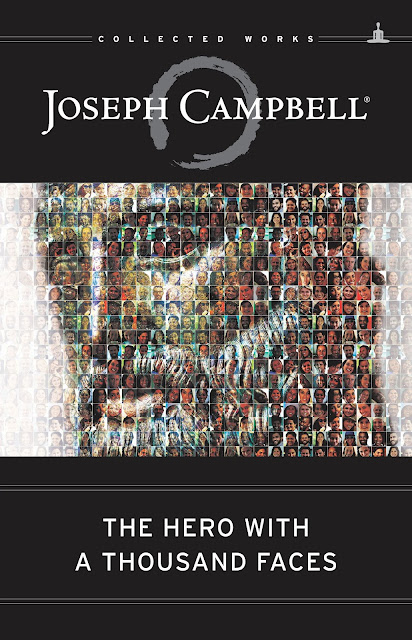Today obscurists, we’re being all sophisticated whilst discussing Joseph Campbell’s “The Hero with a Thousand Faces.” It’s a book about mythology, psychology, and the very human condition!
It’s ok.
What I love about this book:
First off, just going over the sheer scope of myth and religious stories that this book addresses, you get a really cool survey of many stories from all over the world. It’s a regular smorgasbord of global culture references that, while a bit scattered in its approach, still gives you a great bird’s eye view.
However, the central thesis of Campbell’s book is that we’re basically all telling the same story. The monomyth is an interesting concept that any storyteller should be at least aware of—and while Joseph Campbell may not have invented the Hero’s journey exactly, he did popularize it with this book. Basically, what the Hero’s journey gets at is a distinct pattern to how we tell stories, especially myths.
“The Hero with a Thousand Faces” tries to demonstrate that this impulse and this innate pattern to myth and religion is cross-cultural, occurring in both western and eastern cultures. There is something about that idea that I find beautiful. The whole concept dovetails with one of my values—that we are all more alike than different, and yadda, yadda, yadda.
What I don’t love about this book:
As interesting as this book might be—it wasn’t exactly what I expected, even though I didn’t quite know what to expect.
I think my biggest problem with “The Hero with a Thousand Faces” is that it goes down some pretty speculative roads undergirded by a combination of Freudian and Jungian psychology, which while fascinating, is firmly out-of-date. To be fair, this wasn’t so starkly true back when Campbell wrote the book, but even in 1949, Jung’s Analytical Psychology was heavily criticized.
Ultimately, to lean on a cliché, it’s one of those; if it sounds too good to be true, it probably is, situations. I think that Jung’s idea, which Campbell leans on heavily with this book, regarding a collective unconsciousness that we’re all connected to and have access to sounds super cool—as science fiction. There isn’t a shred of verifiable evidence that there is any such thing as a collective unconsciousness that can’t be explained by the mere fact that we’re all situated in a closed ecosystem, often consuming the same media, or cross-pollinating between cultures.
This preview is an Amazon Affiliate link;
as an Amazon Associate, I earn from qualifying purchases.
Parting thoughts:
One of the main critiques of Campbell’s work is that to arrive at the conclusions he wanted, he cherry-picked his examples. That, and convincingly sounding like he knows what he’s talking about, makes him seem all the more revelatory. What I’m describing here isn’t actually wisdom—it’s sophistry—a form of clever but fallacious argument that we get from the Greeks.
I’m not suggesting, one way or another, if it was Campbell’s desire to deceive. My intuition is that it wasn’t, but still, this book ultimately rings hollow for me.
For an example of why: let’s take something like our concept of a serpent as a symbol. Well, if you’ve read the bible, you’ll know the story of Adam and Eve—and well, spoilers—but if it weren’t for that damn deceitful snake, we’d all still be chilling in paradise. The lesson? Snakes are universally thought of as evil. Need another example? Jörmungandr in Norse mythology is one of Loki’s children, it’s a giant serpent, and during Ragnarök, it kills Thor! In some Native American traditions, the rattlesnake regarded as the grandfather of snakes caused tempests.
So, snakes are evil. Seems pretty universal, right?
But what I just did there is bullshit. It’s an example of sophistry. While everything I said is true—well, as true as myths go—they’re examples I picked to support my foregone conclusion that snakes are evil and everyone thinks so. For instance, in the Native American tradition I talked about, the rattlesnake myth I was cherry-picking has another side to it—yes, the tempest thing is true, but the rattlesnake also makes the fair winds too. To reference the Greeks again, they thought snakes were wise. It’s why we have that medical symbol, the Caduceus—look it up, trust me, you’ve seen it.
This book does a lot of this—work backward from a premise while giving the illusion of working toward one, and it’s what a lot of intentionally and unintentionally dishonest people do out there in our modern world.


No comments:
Post a Comment